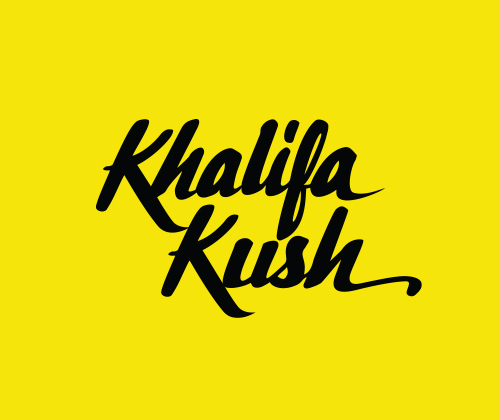The Joint.
Learn the Very Latest Lingo.
Written By: SCOTT "SVH" VON HELDT

From my earliest memories of imbibing the herb, a joint was always my preferred method of choice, something I typically regarded as a special treat enjoyed amongst friends. You pull out your bag of sweet sticky green and pass it around so everyone can get a whiff of its pungent aroma, carefully select a few choice nugs to grind or break apart, releasing the terpene-rich scent into the air, pick your paper of choice, lay it all out on your rolling tray, and gently guide the freshly ground flower through your fingertips, rolling it up, cautiously making sure not to lose any of that precious green goodness. A few flicks of the wrist, seal it with a quick lick, and you’re ready to journey to a place of calm, comfort, and relaxation, either alone or amongst friends.
But in the modern era, with legal cannabis dispensaries popping up as fast as Starbucks’, most cannabis users are opting for an all-new way to smoke joints in what is known as the pre-roll! That’s right, folks, you’ll no longer be subjected to all those fun parts of the cannabis ritual because now your joints come pre-rolled for you, hence the extremely clever naming convention. Pre-rolled joints are a convenient way to puff on the go by eliminating the need to find papers, a grinder, and a rolling tray in order to produce that beloved spliff! It’s ready for you in many handy varieties, sizes, and formats. Pre-rolls also allow consumers to try new brands and different strains without committing to a $50-60 eighth.
As with most great innovations of the world, once you present something great to the masses, everyone jumps on the bandwagon, and soon you have a hard time distinguishing the good from the bad. There are so many joints on the market now in nearly a dozen different configurations, and an extremely wide range of quality and price, from a few dollars to upwards of $60 for a single joint! So you may very well be asking yourself, “What the hell am I really smokin’ right now?” Well, your good pals over here at Hiii are about to break it down for you, from the size and style to the purity and potency, let’s dive into what you are smoking and maybe what you should be smoking instead!
MANUFACTURING TYPE
Pre-rolls are generally made in two different ways. The first and most common way is machine rolling. This method uses a machine that has a plate at the bottom with tubular chambers that hold several cones (cones are empty papers pre-rolled with just filters in place). The ground cannabis is spread across the top of the machine, filling each cone proportionately. Then the joints are jiggled inside a knock box to ensure the flower is evenly packed. Finally, the joints are twisted or folded at the end to keep the loose leaf from falling out.
The second method is hand rolling, which is just what the name implies. Each joint is meticulously rolled by hand to meet a set standard of quality or specification. This process may utilize a small hand rolling device, pre-made cones, or even semi-pre-manufactured joints that receive that human element to the finish to make sure they are the highest quality possible. It’s become slightly more common to see companies dabble with this hybridized method of part machine/part hand rolled joints. However, the majority of pre-rolls on the market today are indeed machine rolled, with hand rolled pre-rolls commanding a slight premium over their machine rolled counterparts. Either method works great, but that extra handheld touch usually results in a more consistently packed and even burning joint, for a slightly elevated experience.

Everyone jumps on the bandwagon, and soon you have a hard time distinguishing the good from the bad.
PAPERS
Your typical cigarette or joint paper is going to be made from thin, lightweight, non-wood plant materials known as “rag fibers,” which are normally high in fillers and contain additives to help regulate a smooth and even burn. In addition to additives, these papers are often bleached and can also be high in concentrations of elements like copper, chromium, and vanadium, which could potentially be dangerous to some smokers.
Hemp or wood pulp papers are going to be slightly thicker than a standard paper and offer a slower burn with improved flavor. Most of the rolling papers you purchase to roll by yourself (Zig-Zag, RAW, OCB, etc.) are primarily hemp-derived, and more and more pre-roll manufacturers are offering hemp-based papers and cones. Hemp is cannabis’ THC-free sister plant, so it makes sense that hemp fiber papers would be some of your best options.
Rice papers are another natural alternative to the standard and tend to burn long, burn smooth, and burn clean without harsh additives, making it a great choice for smokers who want a minimally processed paper.
Tobacco wraps are another popular way to roll up, of which the end result is commonly known as a blunt. A blunt is made using an unprocessed tobacco leaf rolled with your favorite cannabis flower in it just as you would a joint. The result is a smooth, much more earthy and aromatic smoking blend with the extra buzz that comes from mixing nicotine with cannabis. The moist nature of the tobacco leaf means you get an extra slow burn that can last for extended periods of time by either taking slow draws or occasionally re-lighting to enjoy. Using any tobacco product mixed with cannabis is not legally allowed in the regulated product space, and most blunt manufacturers are forced to resort to (tobacco-free) hemp fiber blunt wraps. When in doubt, read the fine print on the packaging.
There are also a few exotic rolling options out there like dried date palm leaves, rose petal cones, and even banana leaf wraps, with most promising a better draw and longer-lasting burn, coupled with a truly unique flavor pairing.

FILTER/CRUTCH TYPE
Most pre-rolls today come with a paper crutch or filter. This crutch helps hold the flower in place in the cone as it’s being filled but also serves a higher purpose by helping to catch all that resinous tar as you smoke to the end of your joint. These paper crutches are typically made from a thicker paper, like cardstock. They are usually precut into rectangular shaped sections that are rolled longways into a nice, round, spring-like shape. Pre-roll cones will come pre-equipped with a paper crutch, which can come in a variety of colors and designs, with many companies utilizing this space for their brand logo. Some companies brand their own while others use shelf brands like the two leaders in this category, RAW and Zig-Zag.
Glass tips, on the other hand, definitely add a touch of class and sophistication to your pre-roll.
Glass tips, on the other hand, definitely add a touch of class and sophistication to your pre-roll, and depending on the style, can really enhance the experience of your smoke sesh. They also ensure that you don’t smoke the crutch, which happens sometimes if you accidentally smoke the joint beyond the flower, which can be a fine line to determine.
Glass tips come in many configurations, from round to fan-tipped, small to wide, and work not only as a filter but as a natural flavor enhancer too! Some companies, like Phunckey Feel Tips, have a patented design featuring a dual-nippled core that splits the smoke stream, cooling it and allowing more flavor to come through. A fanned tip design widens the flow of smoke in a way that provides an incredibly cool, clean, and flavorful hit.
STANDARD PRE-ROLLS
The standard pre-roll you’ll see in most stores will be a one-gram non-infused joint. These are the most prevalent Js on the market, with many shops offering these as “house brand joints” or giveaways for leaving a review.
Typically, your house joints are low-quality, as they are usually utilized for promotions. These are around $2 wholesale to the retailers and consist of a mixture of bottom-of-the-bag shake (bits and pieces that fall off the bud), or sugar trim, aka leafy trim (pieces trimmed from the bud to make it look more appealing), none of which are as tasty or as potent as real flower buds themselves. For this reason, house prerolls should be avoided unless you truly are just looking for a cheap smoke.
The larger nugs (short for nuggets) provide a higher consistency of THC and other cannabinoids, as well as the plant terpenes (which is why we’ve always reached for the best looking and most aromatic nugs in the bag to roll up first). However, larger nugs are usually reserved for an eighth or other jar/mylar offerings where visually appealing nugs are desired. That said, most pre-rolls are made using smalls, or smaller nugs found in the batch, which provide a very similar smoking experience. What you want to look for is a pre-roll made with whole flower (free from shake or trim) that has a potency consistent with its counterpart in a jar or bag. Often you will see an eighth from a brand at 30% THC but the same strain from the same brand in a pre-roll at 19-21% THC. This is a clear sign they mixed some trim in with the buds to make the pre-roll cost-effective to manufacture, but it comes at the cost of quality and potency for the consumer. One-gram pre-rolls can run from $5 to $20 depending on the brand and quality, but all in all you should be able to snag a high-quality premium flower pre-roll from a trusted brand for around $10-15 max.
Just because it’s priced at $60-65 doesn’t change the fact that there’s probably less than $20 worth of weed in it.

SIZE AND STYLE
The possibilities are endless, but some sizes and styles seem to be giving the classic one-grammer a run for its money! First up would be the ever-popular dog walkers, which are small pre-rolls (usually .25-.5 grams) that will typically come in a multipack. These are great for a quick lunch break toke or, as the name implies, a perfect companion for your other hand while walking the dog.
Next up are the .5- and .7-gram joints that come in a two-pack tube or multipack. These are for the consumer that wants to smoke a J, but one gram is too much for one sitting, and a halfsmoked J saved for later isn’t nearly as tasty. These are often a good size if you are really smoking for flavor, as sometimes when you get past the halfway point on a one-gram joint, the tar and resins start to build up so re-lighting a really hashy and resinous strain, can start to taste bitter like a cup of joe poured from the 4PM pot!
For the heavy-hitting smoker in you, there are also the 1.5- to 2-gram blunts. These are generally either 2 grams of whole flower in a hemp blunt wrap adorned with a glass tip, or 1.5 grams of whole flower with .5 grams of solventless rosin (weʼll spell this out in a minute) rolled in the center. These frequently come at a more premium price point, which usually translates to a better quality smoke. Watch out however for “hype” brands that charge a hefty premium for a single joint. Just because it’s priced at $60-65 doesn’t change the fact that there’s probably less than $20 worth of weed in it, so weigh your options wisely.
INFUSED VS NON-INFUSED
Another extremely popular offering is infused pre-rolls, which infuse some form of cannabis concentrate to enhance the efficacy. Most infused joints are infused with either kief, diamonds, powdered THCA, live resin, or live rosin, so let’s break each one down here for you.
Kief is a ground-up powdery substance, sifted from ground cannabis to separate it from the small particles of leaf, stem, and bud. This kief is then either rolled on the outside surface of a joint that’s been dipped in distilled cannabis oil, or is simply mixed and rolled in with the weed. Kief joints tend to taste very smoky and burnt, but are prevalent due to the low manufacturing cost.
Diamonds are created when a concentrate is heated to a point where the fats and lipids “crash out” and create small, diamond-like crystals of THC that can then be sprinkled in with the herb before rolling.
THCA is Tetrahydrocannabinolic Acid, which is the acidic precursor to THC. In its acidic form, THCA is non-psychoactive and carries some of the same benefits as high-dose CBD. However, once you heat up THCA it decarboxylates and the acid falls off, thus converting it to the psychoactive element THC. THCA powder is a preferred method of infusing joints for maximum potency without altering the flavor too intensely.

HASH HOLE
As of late, the rising star of infused smokes is none other than the hash hole, which uses a live (“live” meaning flash frozen immediately upon harvest to preserve the cannabinoids and tridomes) rosin, or solventless extraction of hash by using heat and pressure (as opposed to live resin, which is extracted using solvents like ethanol, which is bad). Aside from donning an extremely clever name, hash holes are considered somewhat of a delicacy in the pre-rolled category. Usually rolled in a hemp wrap with a glass tip, they tend to be made with high-quality indoor flower and premium solventless rosin, giving them a smooth taste and incredible high. But just like the others, hash holes are not all made equally. We suggest starting off by seeing if your favorite rosin maker is offering a hash hole or potentially doing a collab that sees their rosin being utilized. For example, a few years back I met the owners of the brand Hashish out of San Diego and learned their family is from the Middle East and has been making hash together for nearly five generations. When I saw they now have a hash hole, I knew without a doubt it was gonna be great. With a hash hole usually comes a high THC percentage, but you should really be looking more at the terpene percentage, where anything in the 2-3% range is going to be rich in flavor with a higher full-spectrum cannabinoid experience.
PRICE VS VALUE
Cannabis pricing is all over the place, and it can be very challenging to know just how much you should be paying for your products. Always remember, just because it costs a lot does not mean the quality and experience is necessarily worth what you’re paying. Once you know how much you are willing to spend, stay within that range and ask a budtender for the best bang for your buck.
THINGS TO AVOID
When looking at joints there are some things you should keep an eye out for to ensure that what you are breathing into your lungs is safe and in the best interest of your health. Things to avoid are flavored joints, often “naturally flavored” but unfortunately un-natural to the plant and/or our bodies. Just ask yourself, if it needs to be flavored, how bad must it be on its own? You should also avoid gimmicks like flavored papers or tips that release some kind of flavoring into the filter tip when you bite it. This is generally non-cannabis natural flavoring added to “enhance” the taste, when all they do is ruin the flavor of your flower and pose health risks. What you DO want is clean, lab-tested products that you can imbibe with confidence, so make sure you are buying your pre-rolls from a reputable licensed dispensary and take that extra minute to look at the strain and testing details on the back before making your purchase. Ultimately, you wanna make sure your goodies check these safety boxes so you can smoke worry-free.
So by now you should have a pretty good idea of just what the hell it is that you have been smoking, and hopefully, a much better idea of what you intend to be smoking now that you are armed with the knowledge needed to make a “Hiii-ghly” informed decision on your next purchase. Until next time, toke well, my friends!
Scott “SVH” Von Heldt is a lifelong professional musician, author, spiritual guide, and cannabis entrepreneur.
The Ozempic of Weed
THCV
It may be hard to pronounce—Delta-9 Tetrahydrocannabivarin—but it’s a term you need to know. THCV is on everybody’s lips. Although it is considered a minor cannabinoid, THCV is hot right now.
While the secrets of THCV are still shrouded in mystery, it has been dubbed the “diet weed.” But, exactly why, is still a bit of an enigma. Diving deep into the plant’s essence is essential to unravel the riddle. With over 100 different cannabinoids, selecting the specific therapeutic effect is now the holy grail of discernment.
THC is mainly responsible for cannabis’ psychoactive and intoxicating feelings, while THCV wraps itself around the endocannabinoid system and blocks the receptor, reducing the effects of other cannabinoids. It’s here that the “Ozempic Effect” comes into focus.
Why?
By blocking this receptor, THCV (usually found in sativa strains) appears to soak up the hunger “munchie” signals, reducing appetite. THCV may also have significant antioxidant properties, may help regulate blood sugar, and is being looked at as an antidote to Parkinson’s Disease.
















